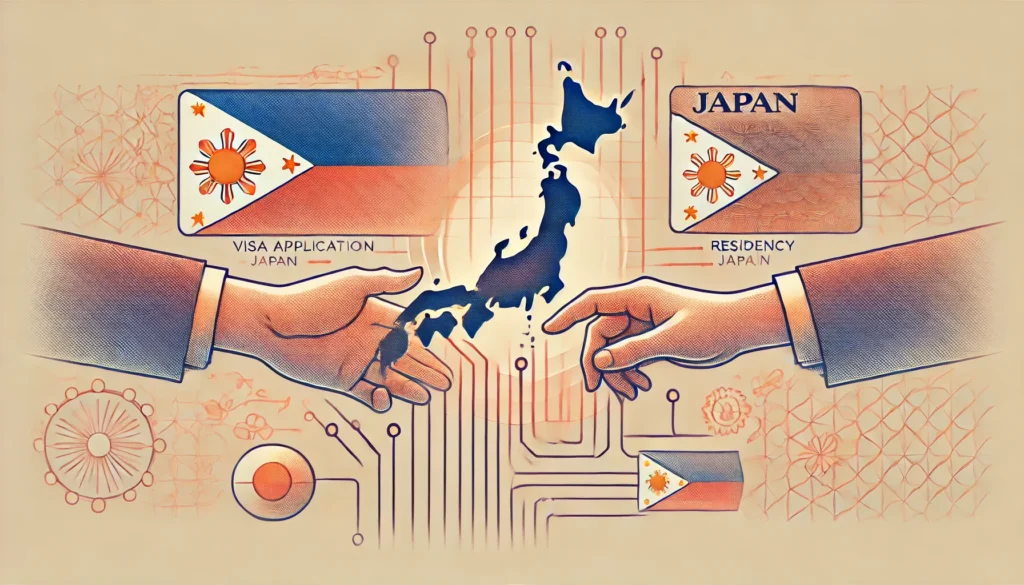Japan has become a popular destination for Filipino workers, with demand rising in sectors such as manufacturing and caregiving. This guide provides essential information on obtaining a work visa for Filipinos in Japan, covering the application process, costs involved, and recent developments in Japan-Philippines relations. Whether you are planning to work in Japan or are currently residing there, this guide will help you navigate the work visa requirements and ensure a smooth application experience.
The Original article in Japanese

VISAdeAI automatically calculates the lowest cost for your visa application by simply entering your information. Try it out now!
Recent Relations with the Philippines
The Economic Partnership Agreement (EPA) between Japan and the Philippines came into effect in 2008, invigorating trade and investment between the two countries.
The Philippines is an attractive investment destination for Japanese companies, especially in the manufacturing sector, where numerous Japanese businesses have established a presence. This has led to an increase in the number of Filipino workers dispatched to Japan, as well as an influx of Japanese tourists visiting the Philippines.
Japan supports the Philippines in infrastructure development and human resource training, and cultural exchange between the two countries is flourishing, with initiatives promoting Japanese language education and cultural understanding. Additionally, Japan’s Official Development Assistance (ODA) has been instrumental in advancing infrastructure development within the Philippines.
Number of Filipino Residents in Japan
This summary is based on statistics from the Immigration Services Agency.
The number of foreign residents in Japan has steadily increased, from 649,078 in 2013 to 788,495 in 2023.
However, each nationality has unique characteristics in terms of residency status. Here, we compare Filipinos with Chinese residents.
As of the end of 2023, the number of Filipino and Chinese residents by residency status is as follows (Chinese numbers in parentheses):
- “Technical Intern Training”: 31,925 (28,860)
- “Specified Skilled Worker”: 17,660 (13,468)
- “Engineer/Specialist in Humanities/International Services”: 9,196 (92,141)
- “Dependent”: 4,891 (76,131)
- “Student”: 2,504 (134,651)
Interestingly, the majority of Filipino residents hold “Technical Intern Training” status, followed by “Specified Skilled Worker,” whereas for Chinese residents, the most common status is “Engineer/Specialist in Humanities/International Services.” This reflects the economic conditions of each country.
However, it is expected that the number of Filipinos in the “Engineer/Specialist in Humanities/International Services” category will increase in the future.
cf. Immigration Services Agency
Cost of Obtaining a Working Visa
In addition to fees payable to the Immigration Services Agency, administrative scrivener (gyoseishoshi) service fees are also required, and these costs are not inexpensive.
Generally, if you hire an administrative scrivener to handle the paperwork, the cost ranges from approximately 90,000 to 150,000 yen. It is recommended to start by obtaining an estimate.
By visiting VISAdeAI, you can automatically calculate the lowest visa application fees for your residency status application! Give it a try and find the most affordable service fees!








